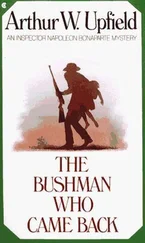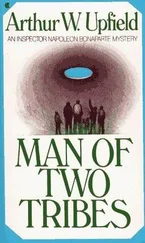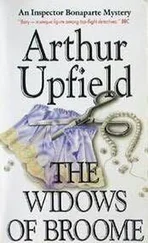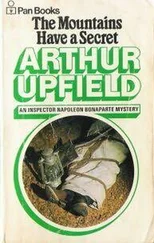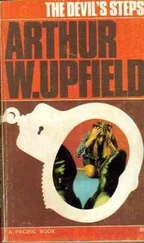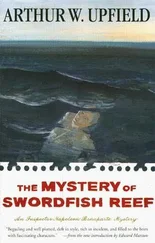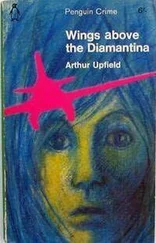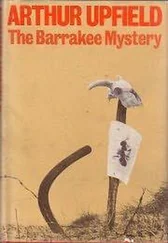Arthur Upfield - The New Shoe
Здесь есть возможность читать онлайн «Arthur Upfield - The New Shoe» весь текст электронной книги совершенно бесплатно (целиком полную версию без сокращений). В некоторых случаях можно слушать аудио, скачать через торрент в формате fb2 и присутствует краткое содержание. Жанр: Классический детектив, на английском языке. Описание произведения, (предисловие) а так же отзывы посетителей доступны на портале библиотеки ЛибКат.
- Название:The New Shoe
- Автор:
- Жанр:
- Год:неизвестен
- ISBN:нет данных
- Рейтинг книги:4 / 5. Голосов: 1
-
Избранное:Добавить в избранное
- Отзывы:
-
Ваша оценка:
- 80
- 1
- 2
- 3
- 4
- 5
The New Shoe: краткое содержание, описание и аннотация
Предлагаем к чтению аннотацию, описание, краткое содержание или предисловие (зависит от того, что написал сам автор книги «The New Shoe»). Если вы не нашли необходимую информацию о книге — напишите в комментариях, мы постараемся отыскать её.
The New Shoe — читать онлайн бесплатно полную книгу (весь текст) целиком
Ниже представлен текст книги, разбитый по страницам. Система сохранения места последней прочитанной страницы, позволяет с удобством читать онлайн бесплатно книгу «The New Shoe», без необходимости каждый раз заново искать на чём Вы остановились. Поставьте закладку, и сможете в любой момент перейти на страницу, на которой закончили чтение.
Интервал:
Закладка:
Arthur W. Upfield
The New Shoe
The Split Point Light
THE EVENING sky was a true prophet. Smoky-yellow cloud-fingers presented as clear a warning as the yellow-gloved hand of a traffic policeman, and all the birds obeyed the warning save the foolish one.
The cloud-fingers turned to crimson, and tinted the Southern Ocean with opalescent hues. The foolish one sported with the little fish, diving and turning in the colours, and when the colours had gone and the sea mirrored the stars, he slept contentedly on the deep.
The wind came before the day, came swift and cold and strong. The day brought rain to scat upon the grey water from the grey sky, and to reveal the land far distant and shrouded in sea-mist. Unlike the gulls and the gannets, the foolish one couldn’t fly, but he could swim, and with frantic haste he steered for the sanctuary of the shore.
His dinner suit kept him warm for a little while and gave him buoyancy, but steadily the white horses grew in number and in strength, charging down upon him, thrusting him deep beneath their salted hooves, each one taking a little of his buoyancy before speeding onward in the race for the land. The end was as inevitable as Greek drama: the price exacted for all foolishness. He became a spent and water-logged vessel, and the cold clamped about his valiant heart. Then lethargy quieted all his fears.
The sea surged him onward to the rocks footing the headland bearing high the Split Point Lighthouse. It failed to whiten more his shirt front, or dim the blackness of his dinner jacket, but its anger increased because its triumph was cheap and its revenge was thwarted by the currents which carried the body clear of the rocks, to deposit it at the feet of Napoleon Bonaparte.
The sea thundered its rage and the wind shrieked its fury. A gull cried with grief, and Detective-Inspector Bonaparte took up the half-grown penguin, carried it above high-water mark and buried it in the dry sand.
He thought no one was near to laugh at him.
It was late afternoon in May. The rain had been swept from the sky and the clouds were being torn to shreds by the wind which whipped the overcoat about his legs and carried the spray to sting his eyes. The one venturesome gull vanished from this place of rock and water, cliff and narrow beach, and when Bony turned his back to the sea, the wind pressed against him in effort to make him run.
Split Point is not unlike the distended claws of an angry cat’s paw, forever thwarted by Eagle Rock standing safely out at sea. Bony surveyed two of these claws rising sheerly from the beach for a hundred feet and more, and then at the less precipitous slope of paw rising to the base of the Lighthouse. At the base of the right cliff two caves offered cold shelter, and within the rock funnel in the face of the left cliff the wind swirled grass and dead bush round and round without cease. At his low elevation, he could seeall the Lighthouse save its foundation upon the grassy sward, a tapering white stalk holding aloft the face of glass beneath the cardinal’s red hat.
Thirty years before, Split Point Light was changed from manual to automatic control, since when it is inspected four times annually by an engineer from the Commonwealth Lighthouse and Navigation Department.
On March 1st an engineer had begun his tour of inspection at nine in the morning. He found the Light in perfect operation, and saw nothing to indicate anything unusual until he discovered the body of a man entombed in the thick wall.
Before nightfall that same day, the investigators from Melbourne were like ants in a piece of rotten wood. They dusted for fingerprints, and they searched high and low for the dead man’s hat, his boots and his clothes. Subsequently, they interviewed a hundred people, and scratched their heads over the result. Hope that they would swiftly draw an ace murderer from the pack dwindled till finally the only card they held was the Joker.
They preserved the body in a glass tank of formalin, and scattered pictures of the dead face to every newspaper in Australia. They chivvied the crooks in Melbourne and other capital cities, and annoyed respectable folk by their questioning. Some became red with anger and others white with frustration, and in his office at Police Headquarters in Melbourne Superintendent Bolt glared at the Joker.
A day nine weeks after the engineer had found the body, Napoleon Bonaparte, on his way back to his department in Brisbane, called on Bolt to talk about the weather. Bolt took him home and talked about a dead body no one knew, or wanted to. He admitted failure to his superior in tenacity if not in rank, and he agreed to all Bony’s demands and plans for attacking the case.
Thus was this product of two races in time to bury a drowned penguin at the very foot of the now famous Lighthouse, and hoping no one was laughing at him. Hope was banished.
At the edge of the cliff to his right stood a woman. She was almost directly above him. She swayed against the buffeting wind, and, did she take one step forward, she would plunge to death. She appeared to be young, and certainly was dark of hair. The grey skirt fluttered like a flag at a mast-head.
It was lunacy to stand there at the edge of that weathered cliff, before her was a drop of a hundred feet at least, and Bony’s reaction first was of admiration for her courage, changing then to ire at the woman’s stupidity. She seemed to lean against the wind, oblivious to the possibility of a sudden fall in pressure which would suck her into the gulf. He shouted up to her to draw back, but either she did not hear, or, hearing, ignored the plea.
Then she slid her right foot forward to the very verge. It seemed she was going to jump. In Bony, perturbation changed to horror. The foot was withdrawn. The woman turned a fraction, and as though from her heels there rose behind her a man. The man was shorter and more stockily built. He appeared to wrap his arms about the girl’s waist, and proceeded to drag her back.
For a step or two only. She stamped her heels on his feet. She struggled to release her arms from the clamp about her waist She exerted all her strength to drag him with her over the edge. Bony could see her frenzied face, and just discern the stony grimness on the face of the man.
Abruptly the man released her, caught her jacket with his left hand, swung her back from the cliff’s edge, and neatly upper-cut her. As she collapsed, he caught her again in his arms and carried her back from Bony’s sight.
“Ungentlemanly, but necessary,” Bony thought, and decided to make sure all had ended well.
There was no way round the eastern claw of Split Point, and no way up to the Lighthouse save by walking the beach for several hundred yards the other way, crossing the bar of the Inlet and negotiating the rocks which had fallen from the cliffs. As he proceeded into the Inlet, the back of the headland came down to meet the level ground, and from this point he could take the long slope to the Lighthouse.
The slope took Bony high above the great basin with its sandbar raised by the sea to keep the creek water within. He passed by two graves of the original pioneers of this district, on and up to skirt the eight-feet-high iron fence about the Lighthouse. To his left were the houses once occupied by the keepers: to his right, low clumps of tea-tree bush scattered upon the grassland to the verge of the cliffs.
The wind hissed about the corners of the iron fence: the white towering structure ignored it. On passing into the clear beyond the fence, Bony saw no one. He proceeded to the place where the girl had appeared, and, keeping safely back from the cliff, was undecided what next to do. Below was the narrow strip of sand-beach whereon, written plain, were his own tracks and the mark of the shallow grave he had dug with his heels. Here on the verge were the tracks of the girl’s shoe heels.
Читать дальшеИнтервал:
Закладка:
Похожие книги на «The New Shoe»
Представляем Вашему вниманию похожие книги на «The New Shoe» списком для выбора. Мы отобрали схожую по названию и смыслу литературу в надежде предоставить читателям больше вариантов отыскать новые, интересные, ещё непрочитанные произведения.
Обсуждение, отзывы о книге «The New Shoe» и просто собственные мнения читателей. Оставьте ваши комментарии, напишите, что Вы думаете о произведении, его смысле или главных героях. Укажите что конкретно понравилось, а что нет, и почему Вы так считаете.

